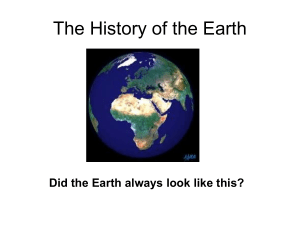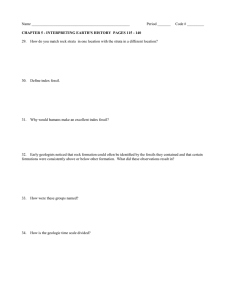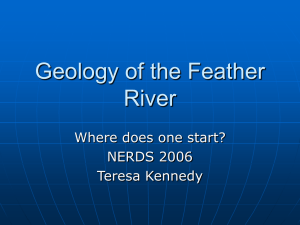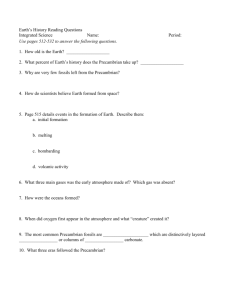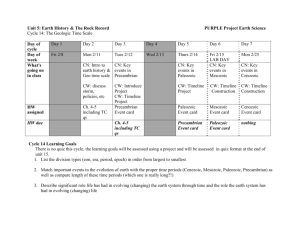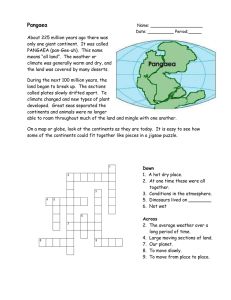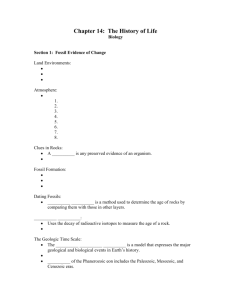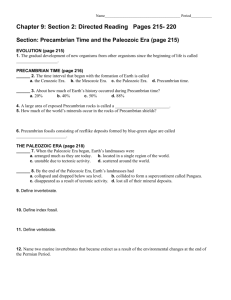Ch 19 w.s. - North Mac Schools
advertisement
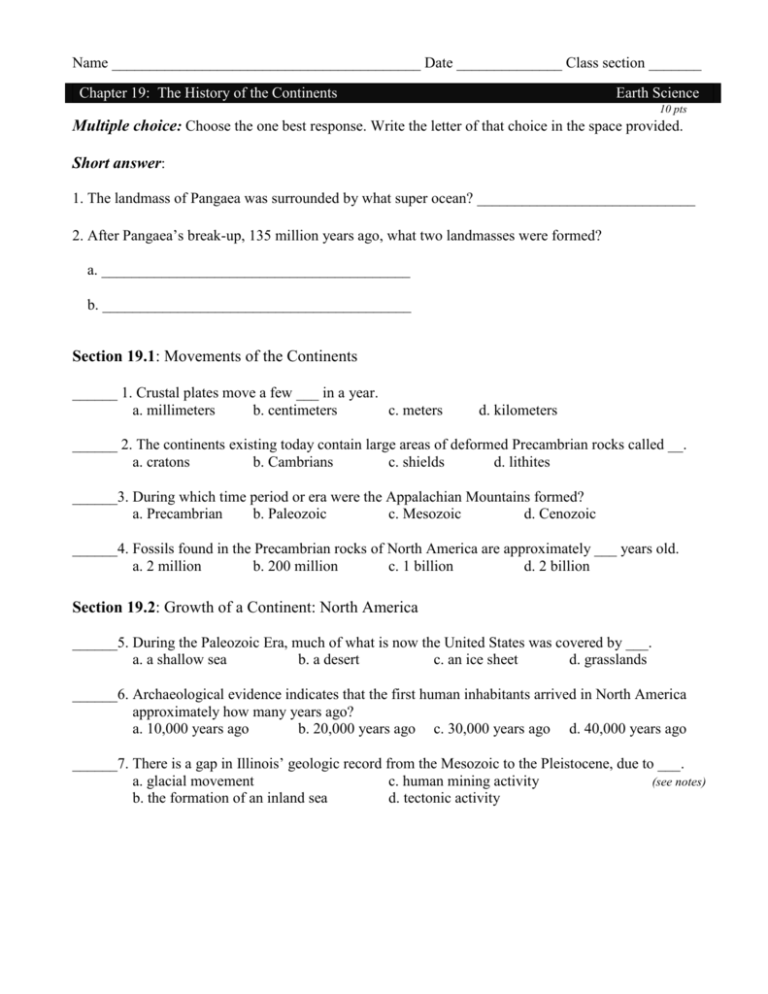
Name _________________________________________ Date ______________ Class section _______ Chapter 19: The History of the Continents Earth Science 10 pts Multiple choice: Choose the one best response. Write the letter of that choice in the space provided. Short answer: 1. The landmass of Pangaea was surrounded by what super ocean? _____________________________ 2. After Pangaea’s break-up, 135 million years ago, what two landmasses were formed? a. _________________________________________ b. _________________________________________ Section 19.1: Movements of the Continents ______ 1. Crustal plates move a few ___ in a year. a. millimeters b. centimeters c. meters d. kilometers ______ 2. The continents existing today contain large areas of deformed Precambrian rocks called __. a. cratons b. Cambrians c. shields d. lithites ______3. During which time period or era were the Appalachian Mountains formed? a. Precambrian b. Paleozoic c. Mesozoic d. Cenozoic ______4. Fossils found in the Precambrian rocks of North America are approximately ___ years old. a. 2 million b. 200 million c. 1 billion d. 2 billion Section 19.2: Growth of a Continent: North America ______5. During the Paleozoic Era, much of what is now the United States was covered by ___. a. a shallow sea b. a desert c. an ice sheet d. grasslands ______6. Archaeological evidence indicates that the first human inhabitants arrived in North America approximately how many years ago? a. 10,000 years ago b. 20,000 years ago c. 30,000 years ago d. 40,000 years ago ______7. There is a gap in Illinois’ geologic record from the Mesozoic to the Pleistocene, due to ___. a. glacial movement c. human mining activity (see notes) b. the formation of an inland sea d. tectonic activity
